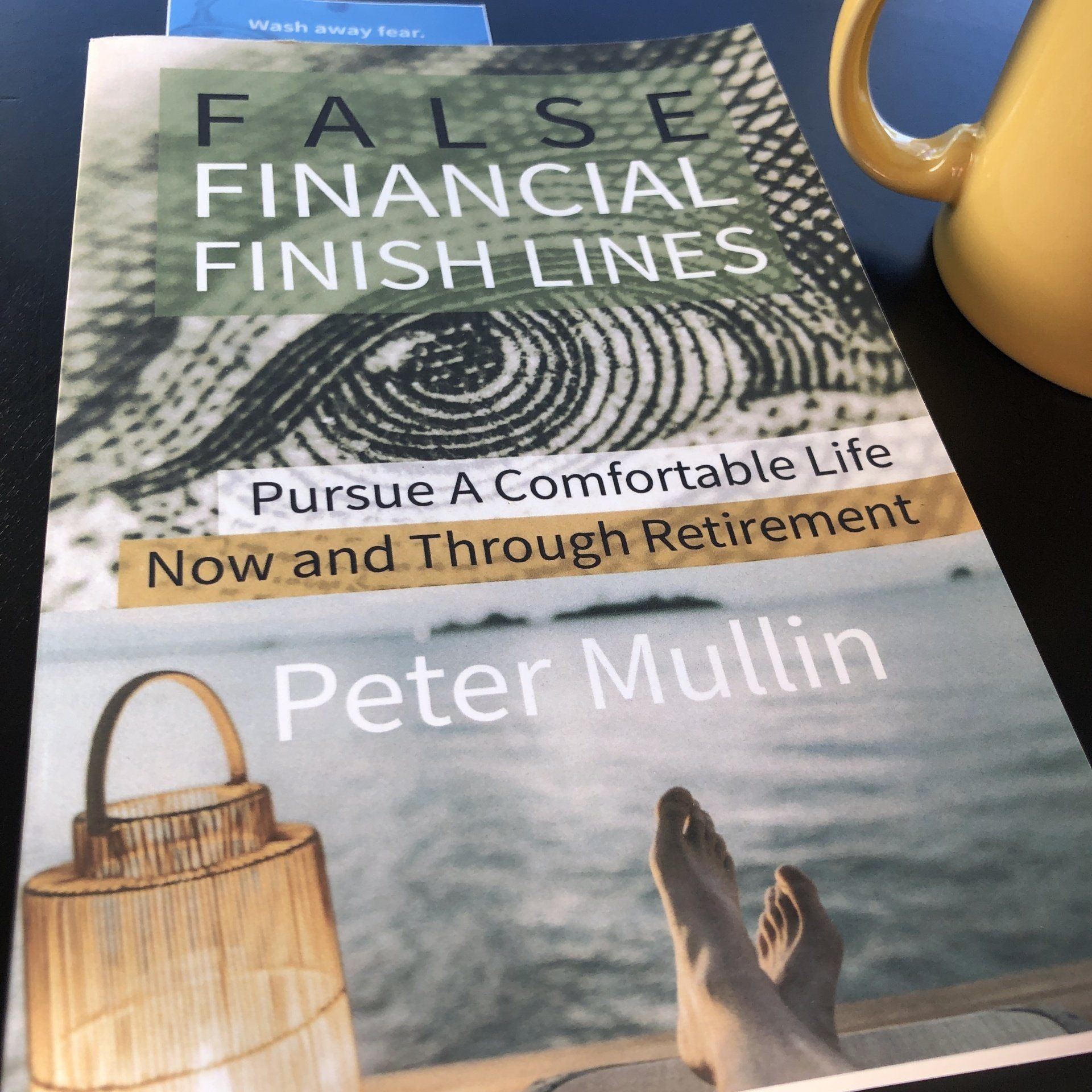Will the supply chain and inflation sink the ship in 2022?
How much more are you paying for a gallon of gas at the pump today? How about a 12-pack of soda? Have you gone shopping for electronics lately? Unfortunately, some of these prices may not right themselves for at least a couple of years now.
We are already in the middle of October, and supply chain issues are top-of-mind for investors. Will this bad economic weather continue to be the heavy fog that delays a return to robust growth for the US and the world?
There are a lot of ships waiting to deliver goods. There are a lot of companies dependent on a tiny electronic widget known as the semi-conductor. When will this fog clear up?

I do enjoy the sport of reading market forecasts and soaking in as many economic narratives as I can. But, eventually, we have to decide on a goal or destination for portfolios for both the short-term and, importantly, the long term.
- I get to an opinion by reading many forecasts and opinions
- A clients risk preferences and dependency on their money is a vital factor
- Short term factors and risks can present buying opportunities
- More considerable, more pervasive factors can cause us to change course
During uncertain times like these, economists tend to have a supply issue, too. Meaning we have too many opinions pointing in opposite directions! I am quick to recall Warren Buffet' statement, “We think that any company who has an economist on staff certainly has one employee too many.”
You can not predict the future. But we sure can look to the past and guess how the latest concerns end. Hint: We think the supply-chain problems take care of themselves over the next couple of years for much of the market.
The head of investment strategy with Blackrock reminded Business Insider recently that inflation is nothing new.1 In their market insights, Blackrock reminds us that the first Big Mac sold for about $0.50! Now, I guess it costs about six dollars?! Remember when Shaq was promoting the Mac?
Some inflation is normal. Too much supply with low demand is not.
This supply chain you hear a bit like a massive warehouse bursting with goods. Except much of the inventory can't move until some additional widgets arrive. Consumers want the goods! And there are still more goods stored in semi-trailer containers outside in the parking lot waiting to unload. Consumers can afford the goods. Blackrock reminds us, again, that $3 trillion is in our spending pockets.2
So why don’t the warehouses unload the stuff they have? Some of this is COVID-19 related yet. The world is connected. One outbreak affects another. Unfortunately, this translates to higher costs for you and I, in the meantime.
But folks, if that is our vision, then let’s set sail accordingly for 2022. And let’s equip ourselves with a few reminders from the recent past.
Cycles go in circles
A Drought can persist. And perhaps drought is the best analogy for the current pandemic-induced supply-demand climate. The good news is, eventually, a supply-demand cycle needs to change again. And the clear weather is on the horizon.
- $3 trillion in consumers pockets is no small number (Blackrock)
- Lumber more than doubled in price; but it has since fallen 56% since April, according to Business Insider
- Consumers are in line to buy what is available
Demand is just begging to be filled. Who wants to wait ten weeks for a new mattress or bed? Cars are waiting for semi-conductor chips. (Did you miss the portfolio update from earlier this year covering this topic?) The cost for shoes and cars has increased. All the while people are buying the shies and cars.
In a recent blog entry, LPL Financial’s Chief Market Strategist, Ryan Detrick said, “There’s plenty of pent-up demand, but supply constraints are still in place and it’s going to take time for them to unwind.”3
Stay the course. But be mindful of inflation.
Portfolio Ideas:
Cash is King: Read the 3rd Quarter Blog Entry by Peter Mullin
Stocks that Grow Dividends: Why not consider incorporating some companies who have historically increased third dividend at a rate higher than inflation over the past 20, 40, or 50 years?
Financials: When interest rates rise, this can boost the bank’s profits because they can collect more interest on their books.
Be patient with supply chain issues. Semi-conductors are a sore spot. Furniture and retail are a sore spot. But supply issues go in cycles.
Big Tech: 60% of businesses surveyed by Ernst & Young2 said they would be incorporating technology into their supply chain. The lesson? Robots and AI do not get sick - too often.
###
Source:
1. Business Insider, “Investors should stick with stocks…”
2. Ernst and Young, “How COVID-19 impacted supply chains.” https://www.ey.com/en_us/supply-chain/how-covid-19-impacted-supply-chains-and-what-comes-next
3. Reference LPL Financial Blog, “Demand Remains Strong Despite Persistent Supply Chain Problems.”
Investing involves risks including the possible loss of capital.
Stock investing involves risks, including the loss of principal.
The opinions voiced in this material are for general information only and are not intended to provide or be construed as providing specific investment advice or recommendations for any individual security. To determine which investments may be appropriate for you, consult your financial advisor prior to investing.
All indexes are unmanaged and cannot be invested into directly. Unmanaged index returns do not reflect fees, expenses, or sales charges. Index performance is not indicative of the performance of any investment. All performance referenced is historical and is no guarantee of future results.
No strategy assures success or protects against loss.
Securities and Advisory services offered through LPL Financial, A Registered Investment Advisor, Member FINRA/SIPC.New Paragraph
- Mullin's take on the "4% Retirement Rule"
- Navigate "Bad Portfolio Weather"
- Tips to Optimize Social Security







Articles and Assets
What are your Priorities?
Well it’s the end of the year. I just searched on Google for “market outlook 2018.” I came up with a little over 58-million “results.”
So should you be investing in stocks in 2018? The quick answer: It’s likely a prudent part of your portfolio. But it depends on your circumstances, right?
It’s apparently popular to throw your hat in the ring.
A mantra that you hear among disciplined professionals is to “stay the course.”
Then you hear “sell high, buy low.”
Who’s right?
The relief of a disciplined strategy is that it can be tailored to you. And tailor we think you should.
Yes, it’s possible that an investor may not utilize stocks in their portfolio at all. Or you may decide to go “all in” with a diversified stock portfolio.
(Side effects from tailoring a strategy may include increased confidence & persistence, apathy toward daily market reports, and increased focus on what really matters.)
Let’s begin with the “Why” of investing for you. Then you can request 15-minutes on the phone discuss your “how.”
So “Why Should You Invest”
Life changes and our “why” of investing ought to transform with life. Some invest for sport – they like the risk/reward of investing – they’re in it for the thrill. I don’t hang with this crowd.
Most of us ought to invest for things we want. Our money & our goals are serious. By investing in a diversified portfolio we can pursue things we want.
1. Living A Comfortable Retirement: Retirement is a noun. It’s up to you to really design and live a retirement that reflects you.
2. Purchasing a Home: Home is a place to live. It can take a down payment.
3. Passing an Inheritance on to Family:
4. Student Loan Shield: This idea is important for many Millennial graduates. Student loans can dominate your budget. But instead of accelerating those payments, what if you paid your required payments, and then invested the additional money that you were going to pay against your loan balance?
5. Emergency Reserves: You probably have read that it’s prudent to keep a relative healthy amount of cash in your checking/savings. Once you’ve achieved that, then you can consider investing additional funds. Go a step further and consider a non-retirement account for you and your house. You can spend this on cars, vacations or use it just as described in #4.
The Dow Jones has seen positive results, so far, in 2017. It’s unusual and sort of uncomfortable as the independent financial advisor. Why is it uncomfortable?
What would sting & linger longer? Finding $20 in the parking lot? Or finding a $20 parking fine on your windshield?
We’ve been finding a lot of metaphorical “$20’s” (i.e. “positive results”) in our portfolios this year. So the second we find a parking fine (or a few in a row) we’ll be sure to ask if stocks are still the right place to park our money.
Complacency can work against us, Dear Clients. Just keep recalling your long-haul strategy and your “why” of investing.
***
Peter Mullin is an independent financial advisor registered through LPL Financial. He lives in Rogers, MN with his family. He was born and raised in St. Cloud, MN. Mullin Wealth Management is located in Waite Park, MN.
The opinions voiced in this material are for general information only and are not intended to provide specific advice or recommendations for any individual.
Investing involves risk including loss of principal.
There is no guarantee that a diversified portfolio will enhance overall returns or outperform a non-diversified portfolio. Diversification does not protect against market risk.
All performance referenced is historical and is no guarantee of future results.
All indices are unmanaged and may not be invested into directly. No strategy assures success or protects against loss.







